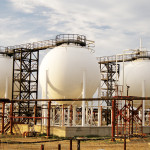The amount of gas used in the UK is due to increase, combined with a rise in demand of heat. At the UKWEC seminar on “UK Gas Strategy” on 11 June in London speakers discussed the challenges for the UK gas sector.

Jonathan Holyoak, Deputy Director of CCS and Fossil Fuel Generation Policy at the UK Department of Energy and Climate Change, set the scene. The UK needs gas as a transition to a low-carbon economy. Gas demand will increase up to 70% by 2020. The UK Government’s gas strategy addresses barriers to investment, providing more certainty on decarbonisation and electricity market reform, addressing issues associated with planning, and taking measures to manage liquidity for independent generators. The Government is also introducing a capacity market, with a view to running the first auction in 2014 for delivery in 2018/19. This initiative should support operators investing in generation capacity.
Alastair Buchanan CBE, speaking in his last public engagement as Chief Executive of Ofgem, the UK’s electricity and gas market regulator, presented the UK’s gas challenge. In March 2013, the UK continued to experience poor weather, and gas prices rose as stocks became depleted. There were additional issues of the interconnector pipeline from Norway going down, combined with low stocks of LNG and ships not getting through. With parts of Europe equally affected, it left the UK in an uncomfortable position. Thankfully, temperatures improved and prices declined as shipments of LNG arrived. However, gas storage reserves for the UK are still currently below the norm.
Dr Keith MacLean, Policy and Research Director of SSE, the utility, followed Ofgem with the industry view. Seven of the UK power plants that ran last December have since closed. The difference between the theoretical and actual thermal capacity of these plants is 11 GW. Last year all available units were dispatched but, with these now closed, there lies a shortfall going forward. Signals of closure are sparking a hiatus in investment. The problem is that gas is not an attractive prospect and the renewables debate does not improve the economics either.
■ Catch up on the speaker presentations here: www.energyinst.org/ukwec-past
■ For reference: Gas Generation Strategy; Securing Britain’s Gas Supply





_-80_result_688_387_s_c1_c_c.jpg)


